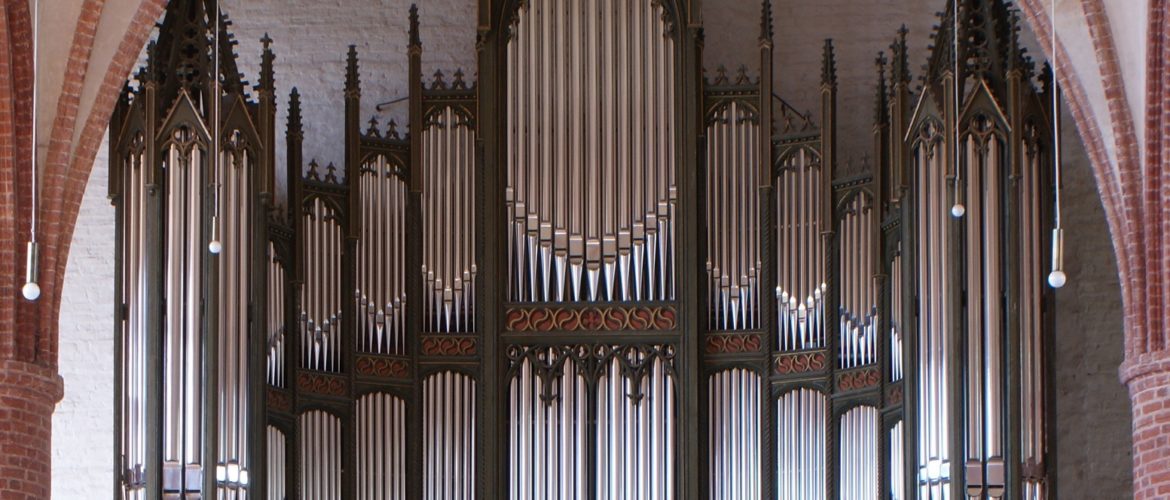Seehausen / Altmark,
St. Petri
(Germany)
St. Petri
(Germany)
Restoration of the Lütkemüller organ from 1867, Alexander Schuke Orgelbau GmbH, 2014
It is probably the best known and also the largest historical instrument that we can admire in the Altmark, and of which the parish of St. Peter and the town of Seehausen can be quite proud.
The organ builder Friedrich Hermann Lütkemüller (16.02.1815 – 19.10.1899) includes it in his list of works as Opus 100. After only fifty years, one of the first serious interventions on this organ took place. For war purposes the prospect pipes made of high-quality tin were removed by the organ builder Rudolf Pieper in 1917 and replaced in 1919 by inferior material made of zinc by Faber & Greve. The instrument remained unchanged until shortly after the war (1948). Afterwards a change in disposition was made, but only from the pipe stock of this organ, and the pipe remains were stored in the organ.
In several stages of construction over the years since 1999 we have begun to restore this instrument to its original state with 44 stops on III manuals and pedal. The existing pipework was reassigned to the individual stops and missing pipes were reconstructed and supplemented in material and construction.
This conscientious procedure was also essential for the entire technical system and today offers us the opportunity to experience the only organ in Lütkemüller with a swell again.
In 2014, with great effort, the last construction phase was also successful in replacing the missing 163 prospect pipes made of high-quality English pewter.
Full of joy the congregation may now use this valuable instrument in church services and introduce and present it to the public in concerts.

stop list
- Bordun 16′
- Principal 8′
- Viola di Gamba 8′
- Gedackt 8′
- Flöte 8′
- Nasard 5 1/3′
- Octave 4′
- Doppelflöte 4′
- Gedackt 4′
- Quinte 2 2/3′
- Octave 2′
- Cornett V
- Scharff V
- Trompete 8′
- Quintadena 16′
- Principal 8′
- Salicional 8′
- Gedackt 8′
- Octave 4′
- Rohrflöte 4′
- Quinte 2 2/3′
- Octave 2′
- Mixtur IV
- Clarinette 8′
- Lieblich Gedackt 16′
- Gemshorn 8′
- Dolce 8′
- Doppelflöte 8′
- Principal 4′
- Fugara 4′
- Traversflöte 4′
- Flautino 2′
- Violon 32′
- Principal 16′
- Violon 16′
- Subbaß 16′
- Großnasard 10 2/3′
- Octave 8′
- Baßflöte 8′
- Violoncell 8′
- Octave 4′
- Posaune 16′
- Trompete 8′
- Clairon 4′

